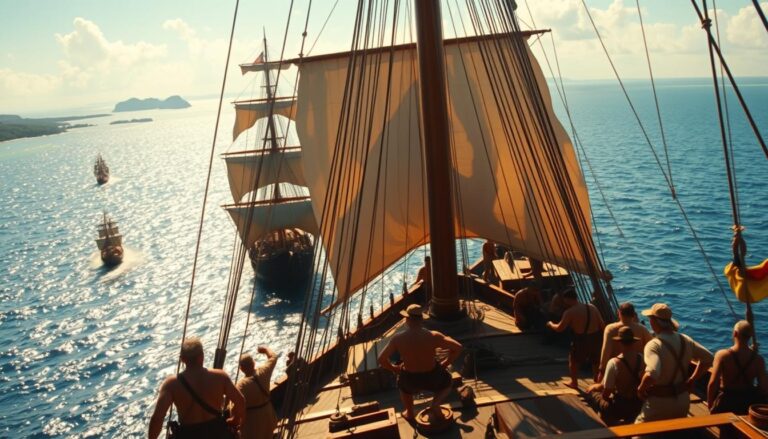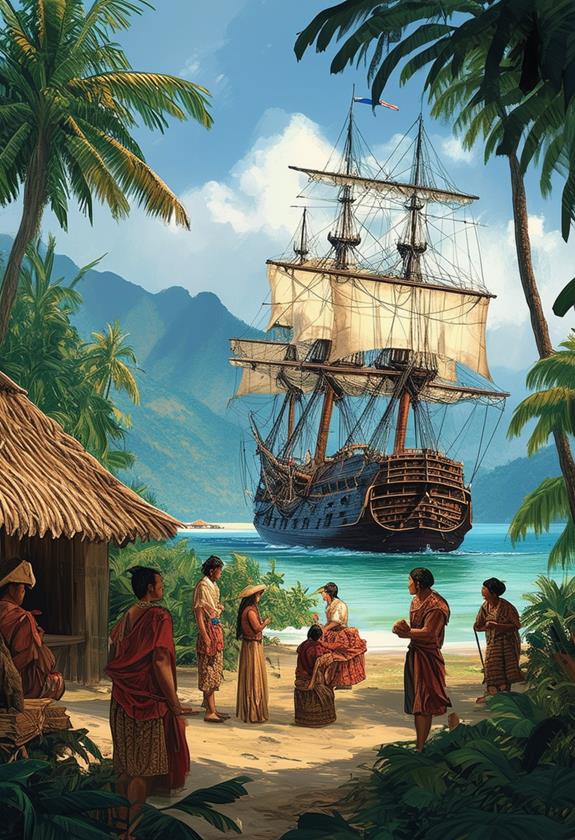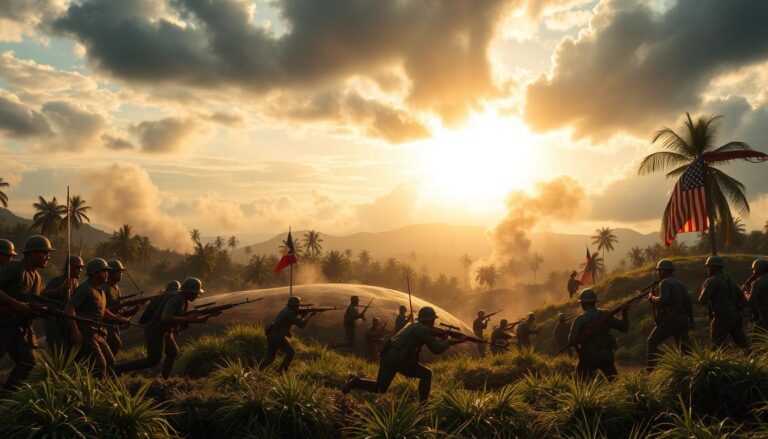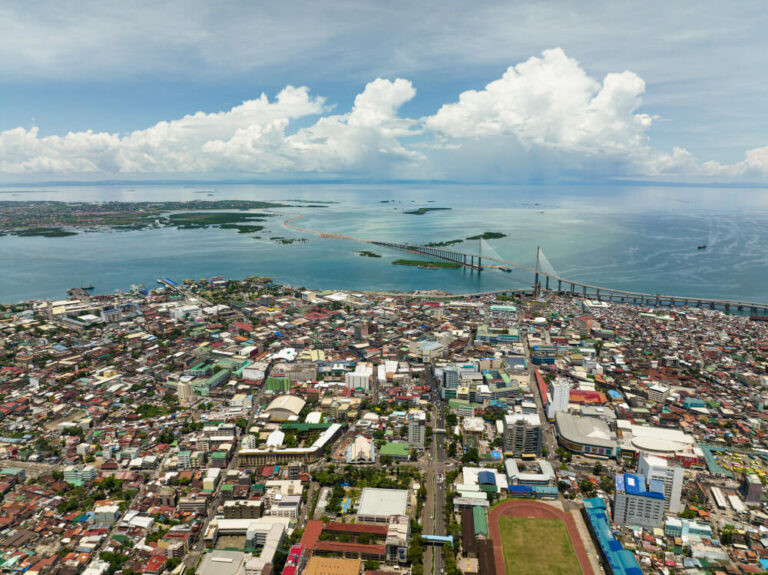The Manila Massacre of 1945: Atrocity, Urban Warfare, Legacy

By early 1945, the Philippines had suffered through nearly three years of brutal Japanese occupation that began shortly after the Pearl Harbor attack in December 1941. Manila, once celebrated as the “Pearl of the Orient,” experienced severe hardships under Japanese control. Food shortages led to starvation, economic collapse destabilized society, and desperation drove some to extremes simply to survive. Hundreds died daily from starvation on the eve of liberation.
For the Allied forces, especially the United States, liberating the Philippines held both strategic and symbolic importance. General Douglas MacArthur, forced to evacuate in 1942, had famously declared, “I shall return.” Reclaiming Manila, the former American colonial capital and MacArthur’s pre-war home, was central to fulfilling this promise.
The campaign began with massive Allied landings at Lingayen Gulf on Luzon island on January 9, 1945. This invasion force, comprising hundreds of ships and over 200,000 troops, even exceeded the scale of the D-Day landings in Europe. From these beachheads, American forces began a rapid advance toward Manila.
Manila Massacre of 1945: At A Glance
| Aspect | Details |
|---|---|
| Historical Incident | Manila Massacre |
| Time Period | February 3 – March 3, 1945 (one month) |
| Location | Manila, Philippines |
| Historical Context | – Philippines under Japanese occupation since 1941 – General MacArthur’s “I shall return” promise – Allied invasion of Luzon began January 9, 1945 |
| Key Figures | – General Tomoyuki Yamashita: Overall Japanese commander who ordered withdrawal – Rear Admiral Sanji Iwabuchi: Defied orders and orchestrated the defense/massacre – General Douglas MacArthur: Led American liberation forces |
| Japanese Forces | – 12,500-13,500 naval personnel (31st Naval Special Base Force) – 4,500 Army troops – Total: ~17,000 defenders |
| Command Conflict | Yamashita ordered evacuation of Manila; Iwabuchi deliberately disobeyed and prepared for last stand |
| Japanese Strategy | – Fortify buildings, especially in Intramuros – Block streets, mine intersections – Establish Genko Line defensive position – Destroy bridges and infrastructure – Wage systematic terror against civilians |
| Major Massacre Sites | – De La Salle College: 41 killed including 16 brothers – St. Paul College: 600+ killed – Fort Santiago: ~4,000 detained, tortured, killed – Bay View Hotel: “Rape center” with 400+ women victimized – Philippine Red Cross Building: 53+ men massacred – German Club: ~1,600 killed in and around burning building – Paco district: 300+ slaughtered |
| Nature of Atrocities | – Systematic execution of civilians – Mass rape and sexual slavery – Infanticide and child murders – Beheadings and bayonetings – Burning people alive in buildings – Torture and starvation – Evidence of premeditated orders |
| Human Cost | – At least 100,000 civilian deaths (1 in 7-10 Manila residents) – Countless physical injuries and psychological trauma |
| Urban Destruction | – 600+ city blocks destroyed – Intramuros left in ruins – Cultural and architectural heritage devastated – Comparable to destruction of Warsaw and Berlin |
| War Crimes Trials | – General Yamashita tried, convicted, and executed (Feb 23, 1946) – “Yamashita Standard” of command responsibility established – Iwabuchi committed suicide (Feb 26, 1945) – ~200 Japanese personnel prosecuted for crimes in Philippines |
| Memorialization | Memorare-Manila 1945 Monument in Intramuros, dedicated in 1995 |
| Historical Significance | – One of the worst atrocities of WWII – Comparable to Rape of Nanking – Part of broader pattern of Japanese war crimes – Devastating impact on Philippines’ human capital and development – Illustration of the horrors of urban warfare |
The Battle and Massacre: February-March 1945
The Manila Massacre, also known as the Rape of Manila, refers to the widespread atrocities committed against Manila’s civilian population by Japanese forces during the battle to recapture the city. This horrific period lasted from February 3 to March 3, 1945, coinciding exactly with the month-long Battle of Manila.
The battle itself ranks among the most destructive urban conflicts of World War II, often compared to the Battle of Stalingrad. It stands as the largest and arguably most brutal urban battle ever fought by American forces. The human cost was devastating: at least 100,000 civilian deaths occurred during the battle, representing approximately one in every seven to ten residents of the city.
Command Conflict: Yamashita vs. Iwabuchi

A critical factor that shaped both the battle and the massacre was a fundamental command conflict within the Japanese military structure. General Tomoyuki Yamashita, commander of all Japanese forces in the Philippines, recognized Manila’s strategic vulnerability. With its large civilian population and numerous wooden structures, Yamashita viewed the city as indefensible and issued explicit orders for all Japanese forces to withdraw and consolidate in the mountainous terrain of northern Luzon.
However, Rear Admiral Sanji Iwabuchi, commander of the Imperial Japanese Navy’s 31st Naval Special Base Force, deliberately disobeyed these orders. His motivations were complex, stemming partly from the intense rivalry between the Army and Navy. As a naval commander, he felt little obligation to obey an Army general. Additionally, Iwabuchi sought to redeem his honor, which had been damaged by the sinking of his previous command, the battleship Kirishima, at Guadalcanal in 1942.
Iwabuchi commanded approximately 12,500 to 13,500 naval personnel, primarily marines belonging to the 31st Naval Special Base Force. This core group was augmented by roughly 4,500 Imperial Japanese Army troops who had not withdrawn with Yamashita’s main forces. The total defending force numbered around 17,000.
Initial American Advances
Driven by MacArthur’s desire for a swift recapture of the capital, the initial American advance was rapid. MacArthur believed the Japanese forces would abandon Manila to avoid a destructive urban fight and even planned a victory parade. This assumption seemed validated when elements of the U.S. 1st Cavalry Division pushed into the northern outskirts of Manila on February 3, 1945.
They quickly seized key locations like the Malacañang Palace and reached the University of Santo Tomas, where they liberated approximately 3,700 Allied civilian internees, mostly Americans and British, who had been held in deplorable conditions since 1942. Prior to liberation, starvation claimed three to four lives daily among these internees. Buoyed by these early successes, MacArthur prematurely declared “Manila has fallen” on February 6, unaware that the battle had barely begun and that Iwabuchi had prepared for a suicidal last stand.
Japanese Defensive Preparations
Despite Yamashita’s intentions, Iwabuchi prepared Manila for a brutal, last-ditch defense. His objectives were clear: inflict maximum casualties on the advancing American forces, delay the use of Manila’s vital port facilities for as long as possible, and render the city unusable through systematic destruction.
An extensive defensive network was constructed, centered on the historic walled city of Intramuros. The Japanese utilized the district’s thick stone walls and large, sturdy government buildings, many already reinforced against earthquakes, as natural strongpoints. These buildings were further fortified with sandbags, bricked-up windows and doors with only firing slits, and interconnected through tunnels and the existing sewer system.
Major streets were blocked with barricades, intersections were mined, and numerous pillboxes were constructed. A defensive line known as the Genko Line, comprising minefields, pillboxes, and converted anti-aircraft and naval guns, was established along the southern edge of the city. As American forces closed in, Japanese troops systematically destroyed bridges over the Pasig River and placed explosive charges in key buildings and infrastructure.
Systematic Slaughter
The violence unleashed upon Manila’s civilian population during February and early March 1945 was not random or incidental to the fighting. It was a deliberate, systematic campaign of terror, later described by war crimes investigators as an “orgy of mass murder.” Evidence points to planned, calculated massacres targeting non-combatants across the city. Captured Japanese orders mandated the efficient killing of Filipinos and the disposal of bodies to conserve resources and avoid logistical problems.
One order explicitly stated: “All people on the battlefield with the exception of Japanese military personnel, Japanese civilians, and special construction units will be put to death.” Another mandated efficiency in killing: “When Filipinos are to be killed, they must be gathered into one place and disposed of with the consideration that ammunition and man power must not be used to excess… Because the disposal of dead bodies is a troublesome task, they should be gathered into houses which are scheduled to be burned or demolished. They should also be thrown into the river.”
Sexual violence was rampant and employed as a weapon of terror and degradation. Women and girls of all ages were subjected to rape, often publicly, followed by brutal mutilation or murder. Specific locations, such as the Bay View Hotel, were designated as “rape centers,” where hundreds of women were abused. Large numbers of women were forcibly taken to military brothels to serve as “comfort women,” enduring repeated assaults.
The atrocities extended beyond sexual violence to encompass unimaginable levels of brutality. Infants were tossed in the air and impaled on bayonets, or had their heads smashed against walls or trees. Decapitation with swords was practiced, sometimes in organized mass killings. Civilians were locked in buildings which were then set ablaze, or herded into shelters into which grenades were thrown. Thousands detained in places like Fort Santiago were subjected to starvation, torture, and eventual death, sometimes by being burned alive.
Locations of Key Massacres in Manila
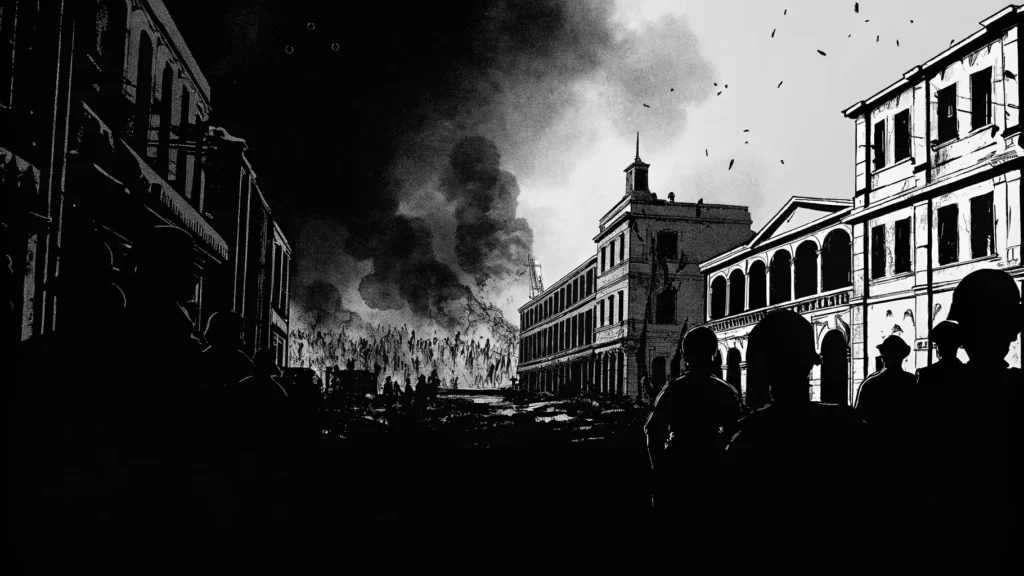
The atrocities were widespread throughout Manila, particularly in the southern districts like Ermita, Malate, Intramuros, and Paco. Some of the most notable massacre sites included:
- De La Salle College: On February 12, Japanese marines killed 16 brothers, raped women, and killed a total of 41 people including priests and children in the chapel.
- St. Paul College, Malate: On February 9, civilians were gathered under the guise of protection, then machine-gunned; buildings were burned. Over 600 were killed and more than 370 injured.
- Fort Santiago, Intramuros: Between February 10-23, approximately 4,000 detained persons were starved, tortured, burned alive, or left to die. Hundreds were later found stacked in dungeons.
- Bay View Hotel: From February 9-17, it served as a “rape center” where over 400 women were abused, 40 repeatedly raped, and 36 attempts at rape occurred.
- Philippine Red Cross Building: On February 10, more than 53 men were massacred inside by Japanese naval troops.
- German Club: The building was set on fire with civilians inside; about 100 were killed in the fire/smoke, and approximately 1,500 more were killed in the vicinity. Infants were bayoneted.
- Taft Avenue & Padre Faura Street: On February 10, a machine gun massacre of civilians killed Associated Justice Anacleto Diaz, his two sons, and approximately 300 others.
- Paco district: On February 10, more than 300 civilians were slaughtered.
Manila Massacre Survivor Accounts
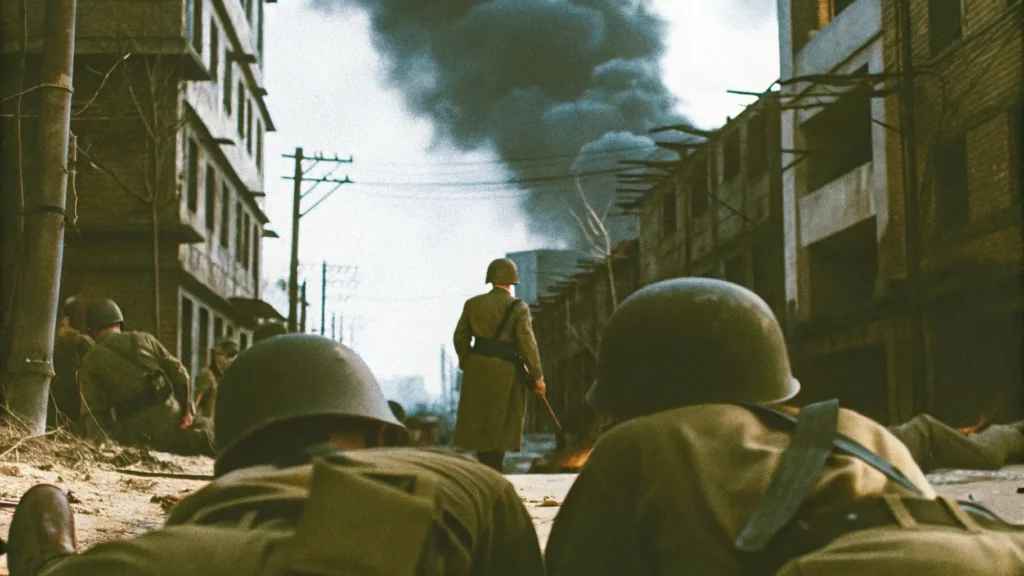
The cold statistics and locations of the massacres gain harrowing clarity through the accounts of those who lived through them. These personal narratives provide indispensable insights into the human reality of the atrocities.
Jim Litton, who was 11 years old during the battle, described his family’s desperate flight from the Japanese, witnessing a landmine injure his mother and kill their housekeeper, and hiding for days in the crawlspace beneath the Philippine General Hospital, scavenging water from toilet tanks until American troops arrived.
Anna Maria Aguilella, only seven years old, survived 16 bayonet wounds, including a severe head injury, after witnessing Japanese soldiers kill her parents and siblings at the Spanish consulate. She lay among the dead for two days before being rescued, though the trauma erased all memory of her earlier life.
Senator Elpidio Quirino (later President of the Philippines) endured the tragedy of losing his wife and three of his children during the shelling and massacres, managing only to bury the remains of his youngest daughter.
Dr. Antonio Gisbert recounted the murder of his father and brother at the Palacio del Gobernador. These individual stories, representing thousands of similar experiences, underscore the intimate and devastating impact of the massacre on families and individuals.
The Human Cost
The Battle of Manila inflicted a catastrophic loss of civilian life. The most widely accepted estimate indicates that at least 100,000 non-combatant Filipino civilians perished during the month-long struggle from February 3 to March 3, 1945. Some sources suggest the figure may have been as high as 120,000. This horrific toll meant that roughly one out of every seven to ten residents of the city was killed in the span of a single month.
These deaths resulted from multiple factors. The primary driver was the deliberate and systematic campaign of atrocities committed by Japanese forces. However, a significant number of civilians were also killed by the intense American artillery barrages and aerial bombardment used to dislodge the deeply entrenched Japanese defenders, as well as being caught in the crossfire during fierce street fighting.
The impact extended far beyond the staggering death toll. Tens of thousands of civilians suffered grievous physical injuries and mutilations. The psychological trauma inflicted upon survivors and the bereaved was immense and enduring. One survivor powerfully encapsulated this shared trauma, testifying, “In a way we were all massacred. Only, some of us were fortunate to have lived through it.”
Destruction of Manila
The month-long battle reduced Manila to a smoldering wasteland. It is considered one of the most devastated capital cities of World War II, rivaling the destruction seen in Warsaw and Berlin. Over 600 city blocks, encompassing thousands of homes and buildings, were systematically razed.
This near-total destruction resulted from two primary causes: the deliberate demolitions and widespread arson carried out by Japanese forces seeking to deny assets to the Americans and make the city unusable, and the relentless, heavy artillery barrages employed by U.S. forces to neutralize the heavily fortified Japanese positions. The intense fighting obliterated much of Manila’s rich architectural and cultural heritage, accumulated over centuries of Spanish and American colonial rule.
The historic walled city of Intramuros, the epicenter of the final Japanese stand, was left in ruins. While the deliberate atrocities committed by Japanese forces represent clear war crimes, the analysis of civilian deaths and urban destruction reveals a more complex dual causality. The U.S. military initially imposed restrictions on artillery and air bombardment, hoping to minimize damage and civilian loss. However, the effectiveness of the Japanese defenses and the resulting high American casualties forced a change in strategy, leading MacArthur and his commanders to authorize the heavy bombardment of any structure offering resistance.
End of the Battle and Discovery
The Battle of Manila officially concluded on March 3, 1945, after a month of ferocious fighting. The final pockets of Japanese resistance, often holding out in heavily fortified government buildings like the Finance Building near Intramuros, were systematically eliminated by American troops. What the Allied forces fully liberated was a city in ruins, a landscape of utter devastation.
In the immediate aftermath, the horrifying scale of the atrocities committed against civilians became apparent as American and Filipino forces uncovered mass graves, encountered streets lined with corpses, and began documenting the evidence of systematic slaughter and destruction.
War Crimes Investigations
Recognizing the extent of the brutality, General MacArthur ordered the immediate collection of evidence pertaining to Japanese war crimes committed during the battle and the preceding occupation. Teams began compiling reports, such as the “Report on the Destruction of Manila and Japanese Atrocities,” and collecting sworn affidavits from survivors and witnesses, often from hospital beds.
To formally prosecute those responsible, the United States Army established military commissions in Manila, operating from October 1945 under the authority of the Judge Advocate Section, later the War Crimes Trials Division of the U.S. Army Forces, Western Pacific. These commissions ultimately prosecuted around 200 Japanese military personnel for crimes committed in the Philippines. The Philippine government also established its own National War Crimes Office, later the Philippine War Crimes Commission, to investigate and document atrocities.
The Trial of General Yamashita
The most high-profile trial conducted by the American military commission in Manila was that of General Tomoyuki Yamashita, the overall commander of Japanese forces in the Philippines. Yamashita surrendered in northern Luzon on September 2, 1945, and his trial commenced on October 29, concluding on December 7, 1945.
The charge against Yamashita was novel and significant: he was accused not of ordering or committing atrocities himself, but of “unlawfully disregarded and failed to discharge his duty as commander to control the operations of the members of his command, permitting them to commit brutal atrocities and other high crimes…”
The prosecution presented extensive evidence of widespread and systematic crimes committed by troops under Yamashita’s overall command throughout the Philippine archipelago, including the Manila Massacre, the Palawan Massacre of American POWs, wanton executions by the Kempeitai (military police), and the beheading of Filipino generals without trial. The argument was that the sheer scale and nature of these crimes indicated a complete breakdown of discipline that Yamashita, as commander, was responsible for preventing or punishing.
Yamashita’s defense team did not deny that horrific atrocities had occurred. However, they argued that Yamashita had not ordered them, was often unaware they were happening due to the breakdown of communications caused by the intense Allied offensive, and lacked effective control over all units, particularly the naval forces under Iwabuchi who had explicitly disobeyed his order to evacuate Manila.
Despite these arguments, the military commission found Yamashita guilty as charged, holding him responsible for the actions of his troops based on the principle of command responsibility. He was sentenced to death by hanging. The case was appealed to the Supreme Court of the Philippines and the Supreme Court of the United States, both of which declined to overturn the verdict. General MacArthur confirmed the findings, and Yamashita was executed in Los Baños, Laguna, on February 23, 1946.
The “Yamashita Standard” and Command Responsibility
The trial and conviction of General Yamashita established a significant and controversial legal precedent in international law, often referred to as the “Yamashita Standard.” This standard posits that a military commander has an affirmative duty to take necessary and reasonable measures to control their troops and prevent them from committing atrocities.
Crucially, it holds that a commander can be held criminally liable for widespread crimes committed by subordinates if they knew, or should have known (based on the circumstances and available information), that such crimes were being committed or were about to be committed, and failed to act decisively to prevent or punish them. This principle extends liability beyond direct orders or personal participation to encompass negligence in command duties.
Fates of Other Key Figures
While Yamashita faced trial for overall command failure, the fates of other key figures varied:
- Rear Admiral Sanji Iwabuchi: The commander directly responsible for the naval forces that perpetrated the majority of the atrocities within Manila, Iwabuchi escaped trial by committing suicide in his command post within Intramuros on February 26, 1945, as defeat became imminent. He was posthumously promoted to Vice Admiral by the Japanese Navy.
- General Akira Mutō: Yamashita’s Chief of Staff, Mutō was also tried for war crimes related to the Philippines campaign, including the atrocities. He was convicted and executed by hanging on December 23, 1948.
- Other Officers: Numerous other Japanese officers were tried by Allied commissions in Manila and elsewhere for specific atrocities committed across the Philippines. Examples include Lieutenant General Shigenori Kuroda (Governor-General), Lieutenant General Takeshi Kono (Panay massacres), Major General Masatoshi Fujishige (Batangas massacres), and Major General Yoshitaka Kawane (Bataan Death March and Camp O’Donnell deaths).
Historical Significance and Legacy
The Manila Massacre stands as one of the most horrific atrocities committed during World War II, frequently compared in its scale and brutality to the infamous Rape of Nanking perpetrated by Japanese forces in China in 1937. It serves as a chilling testament to the depths of inhumanity possible in wartime.
The Battle of Manila itself represented the brutal reality of large-scale urban warfare against a fanatical enemy, offering grim lessons for future conflicts fought in densely populated areas. The Allied victory in Manila marked the effective end of nearly three years of Japanese military occupation in the Philippines and was considered a key strategic and symbolic triumph for General MacArthur in his campaign to liberate the islands.
For the Philippines, the Battle of Manila and the accompanying massacre were an unmitigated catastrophe. The loss of over 100,000 civilian lives and the near-total destruction of the nation’s capital left indelible scars. The violence decimated generations of Filipino families and destroyed a significant portion of the nation’s human capital. The event is deeply seared into the collective memory and historical narrative of the Philippines as a period of profound suffering and loss.
Broader Context of Japanese War Crimes
The Manila Massacre was not an isolated incident but part of a broader pattern of extreme violence and war crimes committed by the Imperial Japanese military across Asia and the Pacific during World War II. Understanding Manila requires acknowledging this wider context, which includes infamous events such as:
- The Bataan Death March (1942): Following the surrender of US and Filipino forces on the Bataan Peninsula, tens of thousands were forced on a brutal march during which thousands died from exhaustion, abuse, or execution. Thousands more perished in the subsequent internment at Camp O’Donnell.
- The Palawan Massacre (December 1944): The execution of approximately 139 American prisoners of war by burning and shooting on Palawan island, an event that spurred Allied rescue missions for other POWs.
- The “Comfort Women” System: The forced sexual slavery of women from occupied territories, including the Philippines, for the Japanese military.
- The Rape of Nanking (1937): A period of mass murder and mass rape committed by Japanese troops after the capture of Nanking, China.
10 lesser-known and surprising facts about the Manila Massacre of 1945
- 🔥 The Manila Massacre occurred during the Battle of Manila (February 3 to March 3, 1945), making it one of the deadliest urban battles of the Pacific War, with an estimated 100,000-500,000 Filipino civilian deaths.
- 🚫 Japanese forces deliberately disobeyed Imperial General Headquarters’ orders to declare Manila an open city and withdraw, choosing instead to fight to the death within the city.
- 👨⚖️ The massacre was largely orchestrated by Rear Admiral Sanji Iwabuchi, who commanded the Japanese Manila Naval Defense Force and refused to retreat from the city.
- 🏛️ The Japanese military systematically destroyed Manila’s historic buildings and cultural heritage, including the 400-year-old San Agustin Church, National Library, and University of Santo Tomas.
- 🏥 Japanese soldiers committed atrocities in Manila’s hospitals, including the San Juan de Dios Hospital, where patients and medical staff were gathered into rooms, doused with gasoline, and burned alive.
- 🧒 Children were not spared during the massacre – some were bayoneted and used for bayonet practice, with infants sometimes thrown in the air and caught on bayonets.
- 🗣️ Despite the scale of the atrocity, the Manila Massacre remains relatively unknown internationally compared to other WWII atrocities, sometimes called “the forgotten Holocaust.”
- 🏛️ The destruction of Manila was so extensive that it was considered the most devastated Allied city after Warsaw, with 80% of utilities, 75% of factories, 80% of southern residential districts, and 100% of the business district destroyed.
- 🎭 Japanese soldiers disguised themselves as civilians to infiltrate refugee centers and safe zones before carrying out mass killings.
- ⚖️ General Tomoyuki Yamashita, commander of Japanese forces in the Philippines, was executed for war crimes related to the Manila Massacre despite evidence suggesting he explicitly ordered his troops not to defend Manila.
Memorialization Efforts
The primary public site of remembrance for the victims of the Manila Massacre is the Memorare-Manila 1945 Monument, located within the historic walls of Intramuros at the Plazuela de Santa Isabel, near the San Agustin Church. This poignant memorial was dedicated on February 18, 1995, coinciding with the 50th anniversary of the battle. It was established by the Memorare-Manila 1945 Foundation, a group composed of survivors of the battle and families of the victims.
The monument itself, sculpted by Peter de Guzman, features a central figure of a grieving, hooded woman cradling a lifeless child, surrounded by six other figures depicting anguish and suffering. It stands as a powerful artistic representation of the despair and loss inflicted upon the civilian population.
An inscription on the memorial wall, penned by Philippine National Artist for Literature Nick Joaquin, dedicates the monument to the memory of the over 100,000 victims:
“This memorial is dedicated to all those innocent victims of war, many of whom went nameless and unknown to a common grave, or never even knew a grave at all, their bodies having been consumed by fire or crushed to dust beneath the rubble of ruins. Let this monument be a gravestone for each and every one of the over 100,000 men, women, children and infants killed in Manila during its battle of liberation, February 3 to March 3, 1945. We have never forgotten them. Nor shall we ever forget. May they rest in peace as part now of the sacred ground of this city: The Manila of our affections.”
Conclusion: Understanding the Manila Massacre
The Manila Massacre of February-March 1945 stands as a horrific chapter in World War II history. Occurring within the context of the brutal Battle of Manila, the massacre involved the systematic and deliberate perpetration of atrocities against the city’s civilian population by Imperial Japanese forces, primarily naval units under the command of Rear Admiral Sanji Iwabuchi who defied orders to withdraw.
The Manila Massacre holds profound historical significance as one of the worst atrocities of the Second World War. It serves as a stark illustration of the horrors of modern urban warfare, particularly the immense danger posed to civilian populations trapped between determined defenders and advancing liberation forces employing heavy firepower.
Remembering the Manila Massacre is essential, not only to honor the countless innocent victims but also to understand the enduring consequences of unchecked military aggression, extremist ideologies, and the devastating realities of war fought in cities.
Works cited
- Battle of Manila Foreshadowed Future Urban Warfare, Provided Lessons Learned, accessed April 25, 2025, https://www.defense.gov/News/Feature-Stories/Story/Article/4058939/battle-of-manila-foreshadowed-future-urban-warfare-provided-lessons-learned/
- “An Orgy of Mass Murder” – Nieman Reports, accessed April 25, 2025, https://niemanreports.org/an-orgy-of-mass-murder-in-a-new-book-james-m-scott-nf-07-investigates-world-war-ii-atrocities-in-the-philippines/
- Bloody history: Japanese army slaughtered more than 100,000 Filipino civilians in desperate revenge in Manila Massacre – Global Times, accessed April 25, 2025, https://www.globaltimes.cn/page/202409/1319967.shtml
- Rampage: MacArthur, Yamashita, and the Battle of Manila: Scott, James M.: 9780393357561 – Amazon.com, accessed April 25, 2025, https://www.amazon.com/Rampage-MacArthur-Yamashita-Battle-Manila/dp/0393357562
- Interview with James M. Scott, Author of Rampage: MacArthur, Yamashita, and the Battle of Manila | The National WWII Museum | New Orleans, accessed April 25, 2025, https://www.nationalww2museum.org/war/articles/interview-james-m-scott-author-rampage-macarthur-yamashita-and-battle-manila
- Destroying the Pearl: Liberation of Manila – Warfare History Network, accessed April 25, 2025, https://warfarehistorynetwork.com/article/destroying-the-pearl-liberation-of-manila/
- The Battle and Rape of Manila – Pacific Atrocities Education, accessed April 25, 2025, https://www.pacificatrocities.org/blog/the-battle-and-rape-of-manila
- Author Sheds Light on Deadly Battle of Manila | AUSA, accessed April 25, 2025, https://www.ausa.org/news/author-sheds-light-deadly-battle-manila
- Fighting for the Pearl of the Orient: Lessons from the Battle of Manila – Modern War Institute, accessed April 25, 2025, https://mwi.westpoint.edu/fighting-for-the-pearl-of-the-orient-lessons-from-the-battle-of-manila/
- Battle of Manila (1945) – Wikipedia, accessed April 25, 2025, https://en.wikipedia.org/wiki/Battle_of_Manila_(1945)
- Battle of Luzon – Wikipedia, accessed April 25, 2025, https://en.wikipedia.org/wiki/Battle_of_Luzon
- I Corps Bolsters Retaking the Philippines in 1945 | Article | The United States Army, accessed April 25, 2025, https://www.army.mil/article/283707/i_corps_bolsters_retaking_the_philippines_in_1945
- Battle of Manila: Offensive, Deliberate Attack, MOUT, January-February 1945 – DTIC, accessed April 25, 2025, https://apps.dtic.mil/sti/tr/pdf/ADA165904.pdf
- Manila massacre – Wikipedia, accessed April 25, 2025, https://en.wikipedia.org/wiki/Manila_massacre
- The-Death-of-Manila-in-World-War-II-and-Postwar-Commemoration.pdf – ResearchGate, accessed April 25, 2025, https://www.researchgate.net/profile/Satoshi-Nakano/publication/324079142_The_Death_of_Manila_in_World_War_II_and_Postwar_Commemoration/links/5d5f74f9299bf1b97cff37ae/The-Death-of-Manila-in-World-War-II-and-Postwar-Commemoration.pdf
- Battle of Manila: Humanity Amidst the Carnage – Intramuros Administration, accessed April 25, 2025, https://intramuros.gov.ph/2021/02/27/battle-of-manila-humanity-amidst-the-carnage/
- Memorare-Manila 1945 – The Historical Marker Database, accessed April 25, 2025, https://www.hmdb.org/m.asp?m=25517
- Memorare Manila 1945 – Atlas Obscura, accessed April 25, 2025, https://www.atlasobscura.com/places/memorare-manila-monument
- Urban Disaster Wrought by Man: The Battle for Manila, 1945 – Digital Commons @ USF – University of South Florida, accessed April 25, 2025, https://digitalcommons.usf.edu/cgi/viewcontent.cgi?article=2103&context=jss
- MacArthur’s Battle to Liberate Manila Amid Murder & Mayhem – Warfare History Network, accessed April 25, 2025, https://warfarehistorynetwork.com/article/macarthurs-battle-to-liberate-manila-amid-murder-mayhem/
- Destruction of a City: Battle of Manila – Pacific Atrocities Education, accessed April 25, 2025, https://www.pacificatrocities.org/blog/destruction-of-a-city-battle-of-manila
- Philippine War Crimes Commission – Wikipedia, accessed April 25, 2025, https://en.wikipedia.org/wiki/Philippine_War_Crimes_Commission
- Urban Warfare in the Pacific: Strategy, Tactics, and Victory in the Battle of Manila, accessed April 25, 2025, https://www.pacificatrocities.org/blog/urban-warfare-in-the-pacific-strategy-tactics-and-victory-in-the-battle-of-manila
- Liberation of the Philippines 1945 | The National WWII Museum | New Orleans, accessed April 25, 2025, https://www.nationalww2museum.org/war/articles/liberation-of-philippines-cecilia-gaerlan
- en.wikipedia.org, accessed April 25, 2025, https://en.wikipedia.org/wiki/Battle_of_Manila_(1945)#:~:text=On%2018%20February%201995%2C%20the,de%20Santa%20Isabel%20in%20Intramuros.
- Manila 1945 Memorial – Wanderlog: travel itinerary, vacation & road trip planner, accessed April 25, 2025, https://extensionembed.wanderlog.com/place/details/125918/manila-1945-memorial
- Memorial Civilian Casualties Manila ‘Memorare’ Intramuros – TracesOfWar.com, accessed April 25, 2025, https://www.tracesofwar.com/sights/7744/Memorial-Civilian-Casualties-Manila-Memorare-Intramuros.htm
- Rampage | San Diego County Library | BiblioCommons, accessed April 25, 2025, https://sdcl.bibliocommons.com/item/show/300548182
- Center for Philippine Studies – ScholarSpace, accessed April 25, 2025, https://scholarspace.manoa.hawaii.edu/bitstreams/a6e472e3-558a-4c4f-8997-2d87612aaf46/download
- Rampage a book by James M Scott – Bookshop.org US, accessed April 25, 2025, https://bookshop.org/p/books/rampage-macarthur-yamashita-and-the-battle-of-manila-james-m-scott/8772719
- Rampage: MacArthur, Yamashita, and the Battle of Manila by James M. Scott, Paperback | Barnes & Noble®, accessed April 25, 2025, https://www.barnesandnoble.com/w/rampage-james-m-scott/1127920468
- Kids – Rampage – NLB – OverDrive, accessed April 25, 2025, https://nlb.overdrive.com/library/kids/media/3911550
- Call for Action and Liberation in the Philippines | The National WWII Museum | New Orleans, accessed April 25, 2025, https://www.nationalww2museum.org/war/articles/call-action-and-liberation-philippines
- Sanji Iwabuchi – Wikipedia, accessed April 25, 2025, https://en.wikipedia.org/wiki/Sanji_Iwabuchi
- A Book Review of Rampage: MacArthur, Yamashita, and the Battle of Manila | The National WWII Museum | New Orleans, accessed April 25, 2025, https://www.nationalww2museum.org/war/articles/book-review-rampage-macarthur-yamashita-and-battle-manila
- Rampage by James M. Scott, Paperback, 9780393357561 | Buy online at The Nile, accessed April 25, 2025, https://www.thenile.co.nz/books/james-m-scott/rampage/9780393357561
- Rampage: MacArthur, Yamashita, and the Battle of Manila | Next Page Books, accessed April 25, 2025, https://nextpagebooks.indielite.org/book/9780393357561
- Rampage by James M Scott | Penguin Random House Canada, accessed April 25, 2025, https://www.penguinrandomhouse.ca/books/598993/rampage-by-james-m-scott/9780393357561
- The Battle of M a n i l a – PVAO, accessed April 25, 2025, https://pvao.gov.ph/wp-content/uploads/2018/02/Battle-of-Manila.pdf
- Anna Maria: The Spaniard who survived 16 bayonet wounds during the Battle of Manila, accessed April 25, 2025, https://english.elpais.com/arts/2020-08-28/anna-maria-the-spaniard-who-survived-16-bayonet-wounds-during-the-battle-of-manila.html
- The Death of Manila in World War II and Postwar Commemoration – ResearchGate, accessed April 25, 2025, https://www.researchgate.net/publication/324079142_The_Death_of_Manila_in_World_War_II_and_Postwar_Commemoration
- War crimes | Harry S. Truman, accessed April 25, 2025, https://www.trumanlibrary.gov/taxonomy/term/4126?page=1
- ‘He Offered a Prayer for the Flier He Had Just Killed’: Superior Orders at the US Army Trials in Manila, 1945–1947 – Oxford Academic, accessed April 25, 2025, https://academic.oup.com/jicj/article/21/2/331/7187448
- p.1 CASE NO. 21 TRIAL OF GENERAL TOMOYUKI YAMASHITA UNITED STATES MILITARY COMMISSION, MANILA, (8TH OCTOBER-7TH DECEMBER, 1945), accessed April 25, 2025, https://www.legal-tools.org/doc/c574e3/pdf/
- Trial of General Tomoyuki Yamashita – Law of War, accessed April 25, 2025, http://lawofwar.org/Yamashita%20Commission.htm
- General MacArthur and the Yamashita Decision September 1944 – February 1946. Senior Leadership Ethical Case Study for the Depart – DTIC, accessed April 25, 2025, https://apps.dtic.mil/sti/tr/pdf/ADA209673.pdf
- MacArthur Memorial Education Programs – Who is Responsible for War Crimes?, accessed April 25, 2025, https://www.macarthurmemorial.org/DocumentCenter/View/1369/Yamashita-War-Crimes-Responsibility-Questions
- ‘Dispose of Them’: Massacre of American POWs in the Philippines | The National WWII Museum | New Orleans, accessed April 25, 2025, https://www.nationalww2museum.org/war/articles/dispose-them-massacre-american-pows-philippines
- Leadership Insight No.22 – Mission Command and Command Responsibility, accessed April 25, 2025, https://www.army.mod.uk/support-and-training/our-schools-and-colleges/centre-for-army-leadership/leadership-resources/leadership-insights/leadership-insight-no22/
- Annex — A Note on Command Responsibility – Human Rights Watch, accessed April 25, 2025, https://www.hrw.org/reports/2005/us0405/10.htm
- A Not-So-Distant Mirror: What the Battle of Manila During World War II Suggests About Urban Combat, War Crimes, and the Battle for Gaza – Hoover Institution, accessed April 25, 2025, https://www.hoover.org/research/not-so-distant-mirror-what-battle-manila-during-world-war-ii-suggests-about-urban-combat
- There Were Children on the Battleground: Japanese and Filipino Youth in the Second World War – DigitalCommons@USU, accessed April 25, 2025, https://digitalcommons.usu.edu/cgi/viewcontent.cgi?filename=1&article=2509&context=gradreports&type=additional
- Statistics of Japanese Democide. Estimates, Calculations, and Sources, accessed April 25, 2025, https://www.hawaii.edu/powerkills/SOD.CHAP3.HTM
- Genocide: Philippines | RWI | Western Washington University, accessed April 25, 2025, https://rwi.wwu.edu/genocide-philippines
- War Crimes in the Philippines during WWII – The Simons Center, accessed April 25, 2025, https://thesimonscenter.org/wp-content/uploads/2019/10/Ethics-Symp-2019-p53-60.pdf
- Bataan Death March – Wikipedia, accessed April 25, 2025, https://en.wikipedia.org/wiki/Bataan_Death_March
- The Palawan Massacre: The Story from One of its Few Survivors – Warfare History Network, accessed April 25, 2025, https://warfarehistorynetwork.com/article/the-palawan-massacre-the-story-from-one-of-its-few-survivors/
- Memorare Manila: A Tribute to Resilience – Evendo, accessed April 25, 2025, https://evendo.com/locations/philippines/manila/attraction/memorare-manila
- T. Harry Williams Center for Oral History Collection ABSTRACT INTERVIEWEE NAME: Joseph Emile Dupont, Jr. COLLECTION: 4700.1409 – LSU Libraries, accessed April 25, 2025, https://lib.lsu.edu/sites/all/files/oralhistory/abstracts/military/Dupont_Joseph_T2037-2042.abs.pdf
- Remembering World War II in the Philippines. Volume 1 : proceedings of the Oral History Conference marking the 60th anniversary of the Battle for Manila, accessed April 25, 2025, https://www.iwm.org.uk/collections/item/object/1500107355

